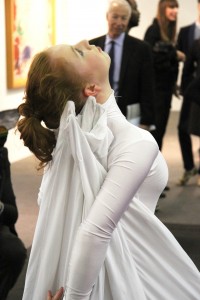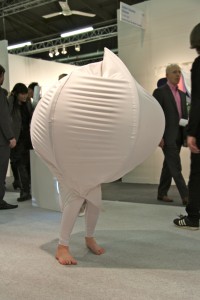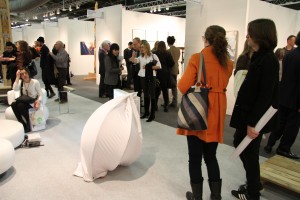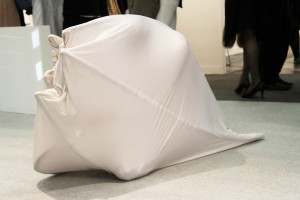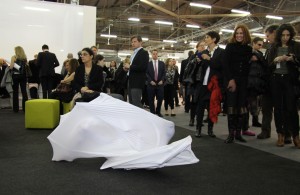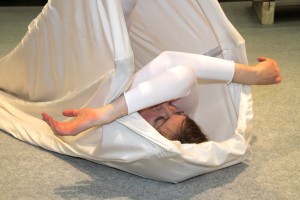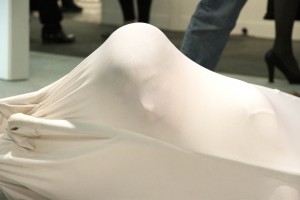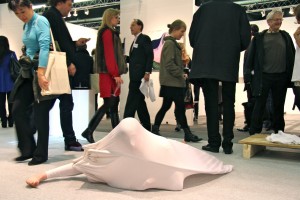Lilibeth Cuenca Rasmussen is a Danish performance and video artist that has developed a strong sense of identity and sensitivity. Set design and costumes play a major role in the anthropological process that has driven her concepts. Her work can be described as confrontational and political but simoutanously feminine. She wants the woman in her work to look strong in a direct way.
We met with Rasmussen at the Armory Show 2012 in New York City after her performance Amorphous Assemblage. She had hired professional modern dancers to act as living sculptures by placing them into white cocoons. They were sporadically placed around the fair’s grounds.
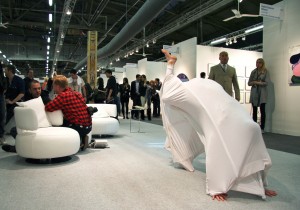
TT: How do you describe this work that we are seeing?
LR: I had constructed spandex costumes with poles. The dancers were then scattered throughout the fair for one to two hours. In the performance, they transformed their bodies into living sculptures by making different forms out of their costumes. The body then becomes architectural. I also had hoped to references minimalism because the dancers are working with geometric shapes that are quite organic.
TT: What is your process?
LR: My process always starts with a concept and is usually about gender issues.
TT: Do you always use dancers for your pieces?
LR: I have only worked with dancers a few times. Usually I am a solo performer. This piece I was the conceptualizer and the instructor.
TT: What kind of directions did you give the dancers?
LR: First day they were given the cocoons and they had time to play around with them. I observed their interactions and encouraged them to find their own unique forms within the structure. I wanted each of them to have their own expression and to be individualized. I didn’t want them to dance but to have them find their own shapes.
TT: What kind of dancers did you work with before?
LR: I worked with ballet dancers on another piece but I found it to be very hard to break the ballet mold because they were so used to instruction. Ballet dancers are more mechanical but they do something special too. In this piece, I wanted the dancers to be more free and semiotic. So, I chose modern dancers for this work.
TT: Were you ever a dancer?
LR: No, but I considered it when I was a young girl.
TT: As a performance artist, what is your relationship to your body?
LR: It is my tool. I make myself vulnerable.
TT: Do you have any artists that have inspired you?
LR: It always changes. My first ever was Vito Acconci. I really liked how confrontational he was with the viewer in his early videos. Most of the performance artists from the 60s and 70s have inspired me.
TT: How has your show here at the Armory?
LR: I have heard “enchanting” and “curious”. It’s been a great audience and very well received.
TT: Describe performance art.
LR: That is a complex question. Performance art these days can be anything. There are more fields that are being explored. It’s live. All performance art is confrontational. You are the artwork and a direct dialogue happens with the audience.
